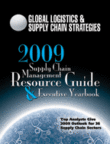
Visit Our Sponsors |
|
|
|
|
|
|
|
|
|
|
|
|
|
|
|
|
|
|
|
|
|
|
|
|
|
|
|
|
|
|
|
|
|
|
|
|
|
|

In the September 2008 study on supply chain visibility and responsiveness Beyond Visibility: Driving Supply Chain Responsiveness, more companies reported year-over-year increases in international transportation costs, inventory carrying costs and-consequently-total landed costs, compared to the visibility study, A View from Above: Global Supply Chain Visibility in a World Gone Flat, that we conducted in September 2007.
It has always been more challenging to manage global supply chains (rather than domestic), and nowadays global companies have a critical need to increase control over the globally dispersed "moving parts" of their business. In addition, global trade compliance and security regulations are becoming more complex, trying to encourage global trade while simultaneously introducing more government visibility and control into these processes (not an easy task!). Aberdeen Group's benchmark report from this past March showed a strong focus on improving trade compliance among global companies (read Global Trade Compliance Priorities in 2008). New regulations, such as the "10+2" Security Filing for U.S. importers, will impose additional mandates on how much visibility companies should have into their upstream supply chains (an area historically difficult for global companies) and how detailed and timely government reporting should be.
To cope with these new global challenges, global enterprises need to transform their supply chains and institute a fundamentally new level of visibility and control over their supply chain processes. In fact, Aberdeen's study in January, The Supply Chain Executive's Strategic Agenda 2008: Managing Global Supply Chain Transformation, found that 84 percent of 805 surveyed companies had already redesigned or begun to redesign their global supply chains at the beginning of this year to meet evolving market and customer demands.
Moving Toward Integrated GTM
New-age global companies take an end-to-end look at their business, building their supply chain networks with a variety of questions in mind, including:
• What is the best way to build a network that will bring most profitable growth in the future while ensuring business continuity?
• What are the key supply chain risks and how to eliminate the business's vulnerabilities to those risks?
• What other considerations beyond profits and risks must be incorporated by a new-generation global company? What is the best way to incorporate sustainability into the organization's culture and the way of doing business?
At the operational level, companies need to simultaneously optimize the creation, purchase and distribution of products, information management, financial flows and terms, and ensure that all operations and relevant documentation comply with national and international regulations.
The Outlook
Leading companies across industries have begun moving from being companies "with global supply chains" to becoming truly global businesses that are able to effectively manage multi-enterprise networks of suppliers, customers and intermediaries, and adopt an integrated approach to all aspects of global trade management. Such an approach includes analyzing interdependencies between the physical and financial flows and networks, and the role of information, in order to simultaneously optimize these processes, creating strategic competitive advantage for the company.
RELATED CONTENT
RELATED VIDEOS
Timely, incisive articles delivered directly to your inbox.






